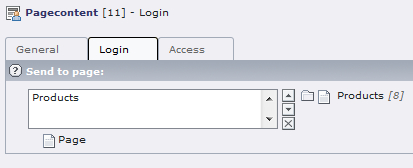The system extension felogin that provides user authentication is included in TYPO3. This extension provides registered users with authentication to your web page. For setting up this extension, you need to make a new content element and choose Login from the list, Pagecontent.
Add a title; and specify the page where the user will be redirected after authentication. If necessary, specify in the setup tab that the login form will be hidden after user identification.

For editing users' data, you can use the sr_feuser_register extension, which provides user registration and data editing. For manually turning on the editing form, specify code EDIT in the configuration (you can find detailed information about the possible version of extension configuration in the official TYPO3 web page, and also read the sr_feuser_register manual— http://typo3.org/documentation/document-library/extension-manuals/sr_feuser_register/current/), as shown in the following screenshot...



